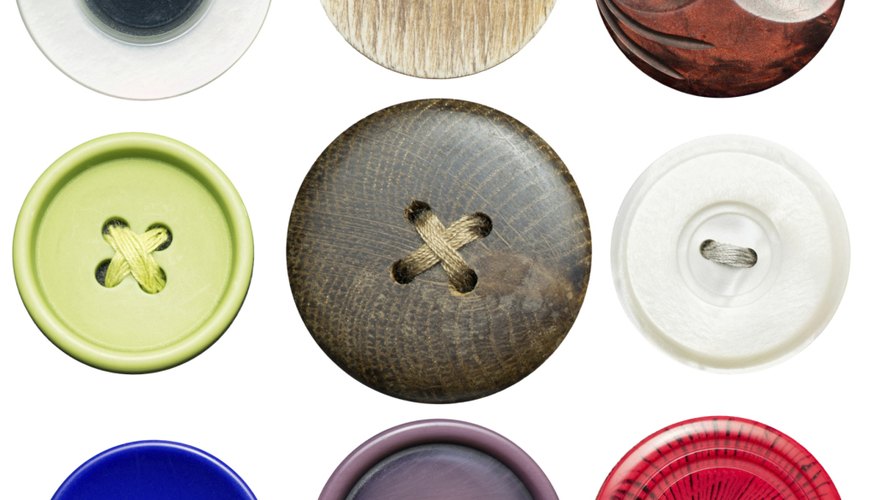Old buttons can be found by the thousands in old jars, cigar boxes and Christmas biscuit tins at estate sales and garage sales. Sorting these huge quantities of buttons and then identifying them can be daunting, because of the sheer numbers. But there are sure fire methods for identifying buttons. If you are planning on analysing lots of old buttons, a comprehensive antique price guide for buttons is a good guide.
- Old buttons can be found by the thousands in old jars, cigar boxes and Christmas biscuit tins at estate sales and garage sales.
- If you are planning on analysing lots of old buttons, a comprehensive antique price guide for buttons is a good guide.
Pour the buttons onto a flat work surface with good light.
Separate and group your buttons by material, design, size and colouring. Use the magnifying glass to inspect details and look for maker's marks. Take out the price guide and begin comparing your buttons with those in the book.
Look for horn and bone buttons. These are some of the oldest materials used for buttons. They have a soft, natural bone colour and are usually moulded. Refer to your guide for pictures of them.
Compare all your metal buttons. Many of these will be different military buttons with designs. Keep and eye out for metal buttons with figures on them, such as a policeman or fireman. Metal 1860s American War buttons are also very collectable. Some metal buttons also have an enamel or cloisonné surface, which makes them highly desirable.
- Look for horn and bone buttons.
- Keep and eye out for metal buttons with figures on them, such as a policeman or fireman.
Separate all of the glass buttons. Be careful here, because you may mistake old porcelain, china or ceramic buttons for glass buttons. Some china buttons will have small coloured decals or paintings on them and can date back as far as 1840.
Look for rubber buttons made by BF Goodrich during WWII. These will have raised relief designs of the insignias of the different branches of the military service, such as the Navy (anchor design). Many veterans collect these buttons.
Watch for large Bakelite buttons made from early plastic in the 1930s and 1940s. They have muted, flat pastel colours and are usually quite large. Bakelite buttons are striking in appearance because of their simple, embossed design motifs. They are highly prized, especially buttons with an art deco era theme characterised by half moon shapes, triangular forms and diagonal lines.
- Separate all of the glass buttons.
- Bakelite buttons are striking in appearance because of their simple, embossed design motifs.
Protect the buttons in your collection made from shells because they are fragile. They will be easy to identify because they will have an opalescent lustre with rainbow colours. They were popular from the Victorian era of the 1890s into the 1920s.
- Protect the buttons in your collection made from shells because they are fragile.
Look for wood buttons. These will be easy to find also, but there will be a wide variety of them and many are still being produced today. Look for wood buttons with an aged patina caused by handling or the original varnish ageing. Look for buttons made from the Tagua nut of the Corozo Palm tree in South America. They come dyed in shades of brown and green, with a soft-brown-coloured, raised designs. These are from 1890 to 1920, but were remanufactured in the 1990s.
TIP
Small metal cabinets with plastic drawers normally used in workshops to hold nuts and bolts are a great way to store, label and protect your old button collection. Many old clothing shops buy old buttons to repair their vintage clothing for resale. Hand-painted buttons are valuable. Set them aside to take to a professional to have them appraised.
